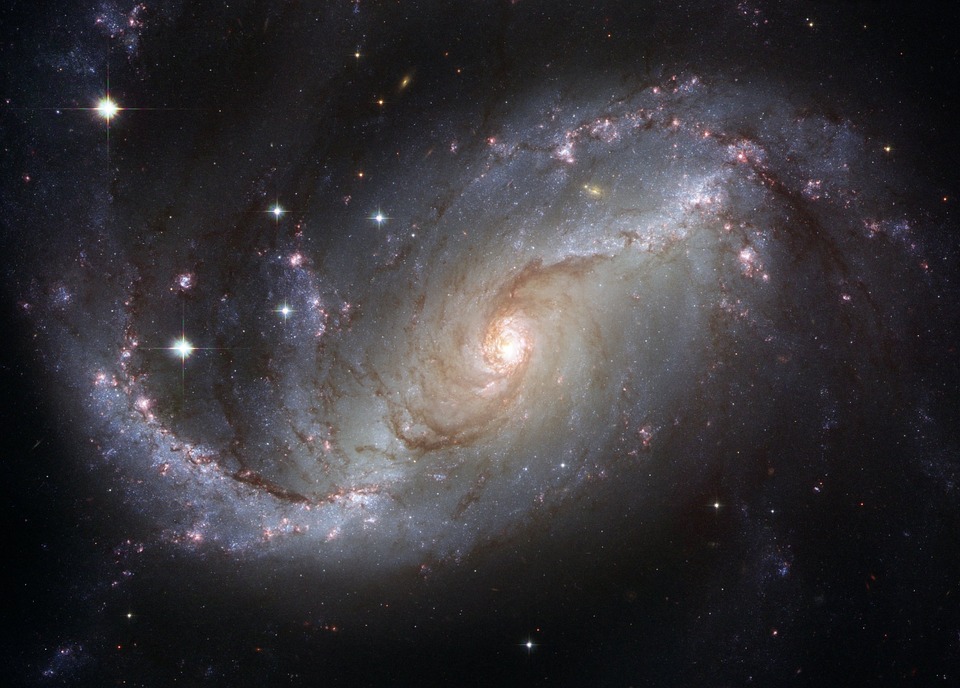NASA’s Hubble Space Telescope has provided some of the most fascinating images taken from deep space. Now it seems that it has captured another phenomenon happening within the cosmos as it snapped a photo of a whirlpool galaxy.
Express reports that the Hubble took a photo of the whirlpool galaxy referred to as M51 which is located 23 million light-years away. This spiraling galaxy is next to a yellowish galaxy referred to as NGC 5195 and the two galaxies seem to be engaged in a “tug-of-war” according to the report. It may look as if the smaller galaxy is pulling on the arm of the spiral galaxy at first but upon closer inspection, the two galaxies have some space between them.
Nicknamed after its shape of resembling a whirlpool, M51 is also “home to young stars, and its yellow core is where older stars reside,” said NASA.
“Many spiral galaxies possess numerous, loosely shaped arms, which make their spiral structure less pronounced. These arms are star-formation factories, compressing hydrogen gas and creating clusters of new stars.”
As for the smaller galaxy, NGC 5195, the agency revealed that it has been passing by M51 for millions of years. “As NGC 5195 drifts by, its gravitational muscle pumps up waves within the Whirlpool’s pancake-shaped disk,” said NASA. “The waves are like ripples in a pond generated when a rock is thrown into the water.”
This year marks the 30th anniversary of the Hubble Space Telescope since its launch back in 1990. One of Hubble’s most famous photos is of the Pillars of Creation in the Eagle Nebula that was snapped back in 1995. NASA released a photo capturing the phenomenon from a newer angle, sprinkled with many baby stars all around it. “The ghostly outlines of the pillars seem much more delicate, and are silhouetted against an eerie, blue haze,” said the agency in a statement.
Along with revisiting the photo that the Hubble telescope is known for, NASA has launched a site where people can see the image the telescope took on their birthdays. The images will vary, from the Swan nebula to a whirlpool galaxy or even to a field full of stars.



 SpaceX’s $2.9 Billion Moon Ship Reveals Spacious Design for Future Lunar Missions
SpaceX’s $2.9 Billion Moon Ship Reveals Spacious Design for Future Lunar Missions  Breakfast Secrets: 'Fiber-rich Foods Are the Key to Weight Loss!' Experts Reveal Shocking Truth
Breakfast Secrets: 'Fiber-rich Foods Are the Key to Weight Loss!' Experts Reveal Shocking Truth  Just 21 Minutes of Cycling a Day Is 'All You Need' for Total Health, Claims Expert
Just 21 Minutes of Cycling a Day Is 'All You Need' for Total Health, Claims Expert  Blue Origin Prepares to Test New Glenn Rocket, Set to Rival SpaceX's Falcon Rockets
Blue Origin Prepares to Test New Glenn Rocket, Set to Rival SpaceX's Falcon Rockets  We’ve found an answer to the puzzle of how the largest galaxies formed
We’ve found an answer to the puzzle of how the largest galaxies formed  Their DNA survives in diverse populations across the world – but who were the Denisovans?
Their DNA survives in diverse populations across the world – but who were the Denisovans?  South Africa amended its research guidelines to allow for heritable human genome editing
South Africa amended its research guidelines to allow for heritable human genome editing  How will Donald Trump address renewable energy research funding in 2025?
How will Donald Trump address renewable energy research funding in 2025?  Urgent Alert: New COVID Variant Causes Alarming Symptoms—You Must Know This!
Urgent Alert: New COVID Variant Causes Alarming Symptoms—You Must Know This!  Philippines' 'Missile Acquisition' Plan Provokes China's 'Arms Race' Warning
Philippines' 'Missile Acquisition' Plan Provokes China's 'Arms Race' Warning  Emergency Declared as Bird Flu 'Spreads' to California Dairy Cows
Emergency Declared as Bird Flu 'Spreads' to California Dairy Cows  How is Donald Trump prioritizing funding for cancer research in 2025?
How is Donald Trump prioritizing funding for cancer research in 2025?  Christmas Eve Asteroid' to Skim Past Earth at 14,743 mph Tonight, NASA Warns
Christmas Eve Asteroid' to Skim Past Earth at 14,743 mph Tonight, NASA Warns  RNA editing is the next frontier in gene therapy – here’s what you need to know
RNA editing is the next frontier in gene therapy – here’s what you need to know  From dead galaxies to mysterious red dots, here’s what the James Webb telescope has found in just 3 years
From dead galaxies to mysterious red dots, here’s what the James Webb telescope has found in just 3 years 































